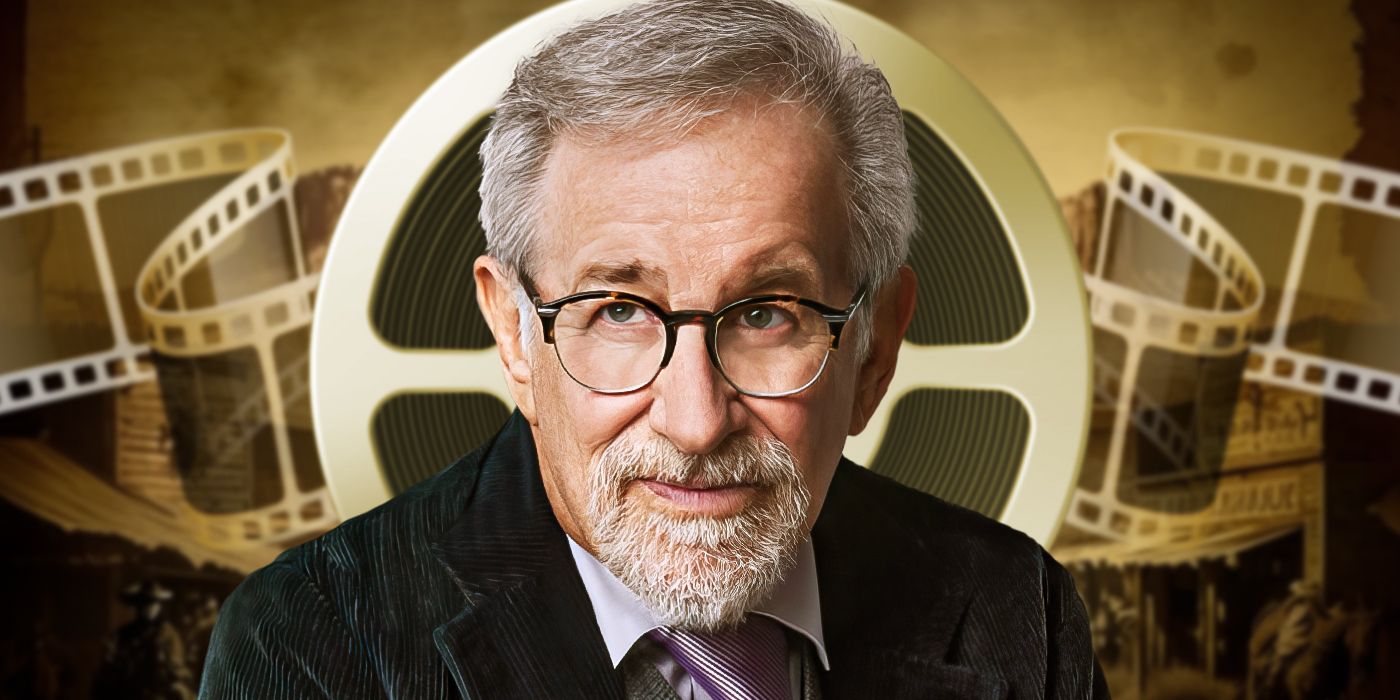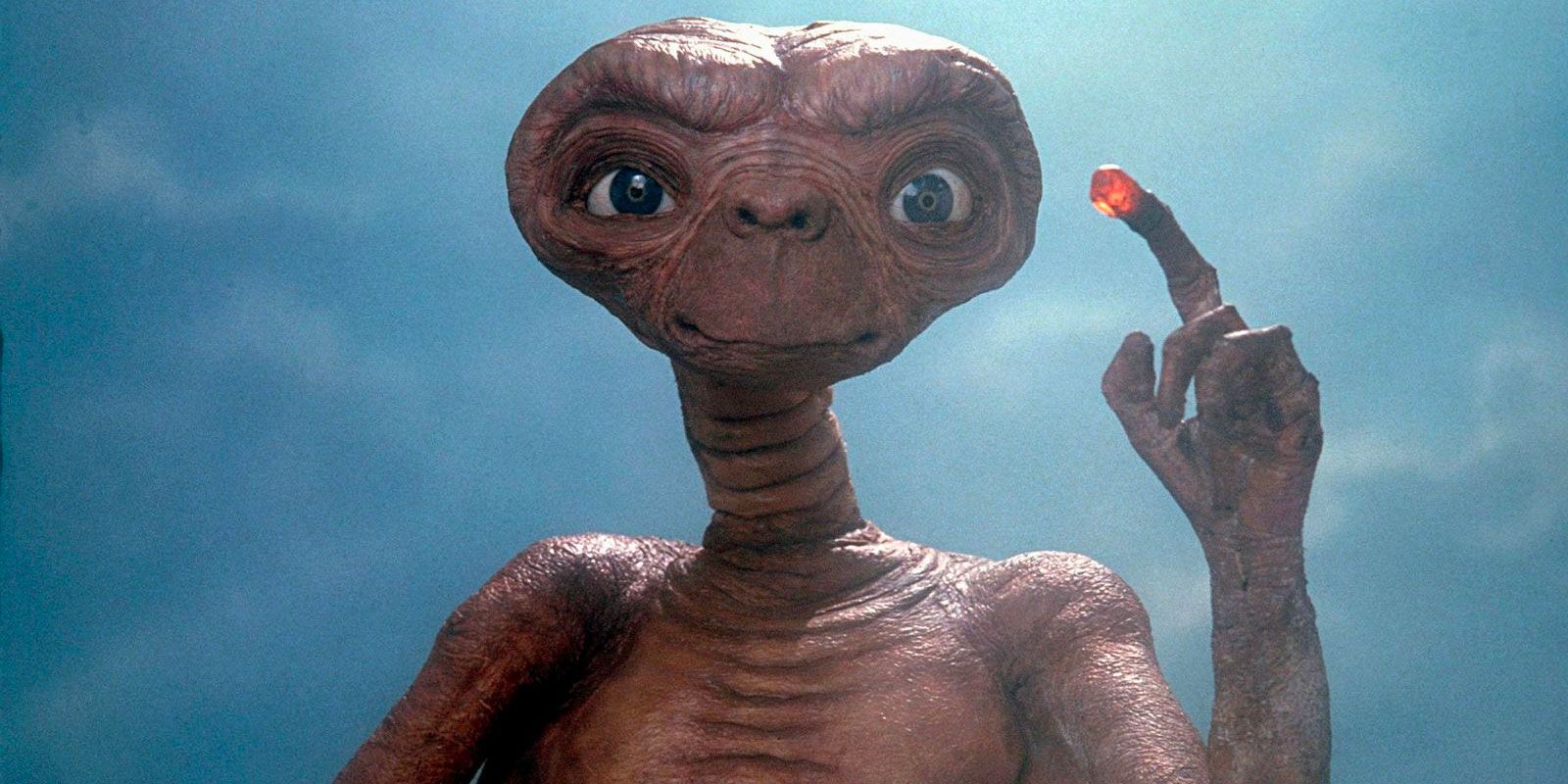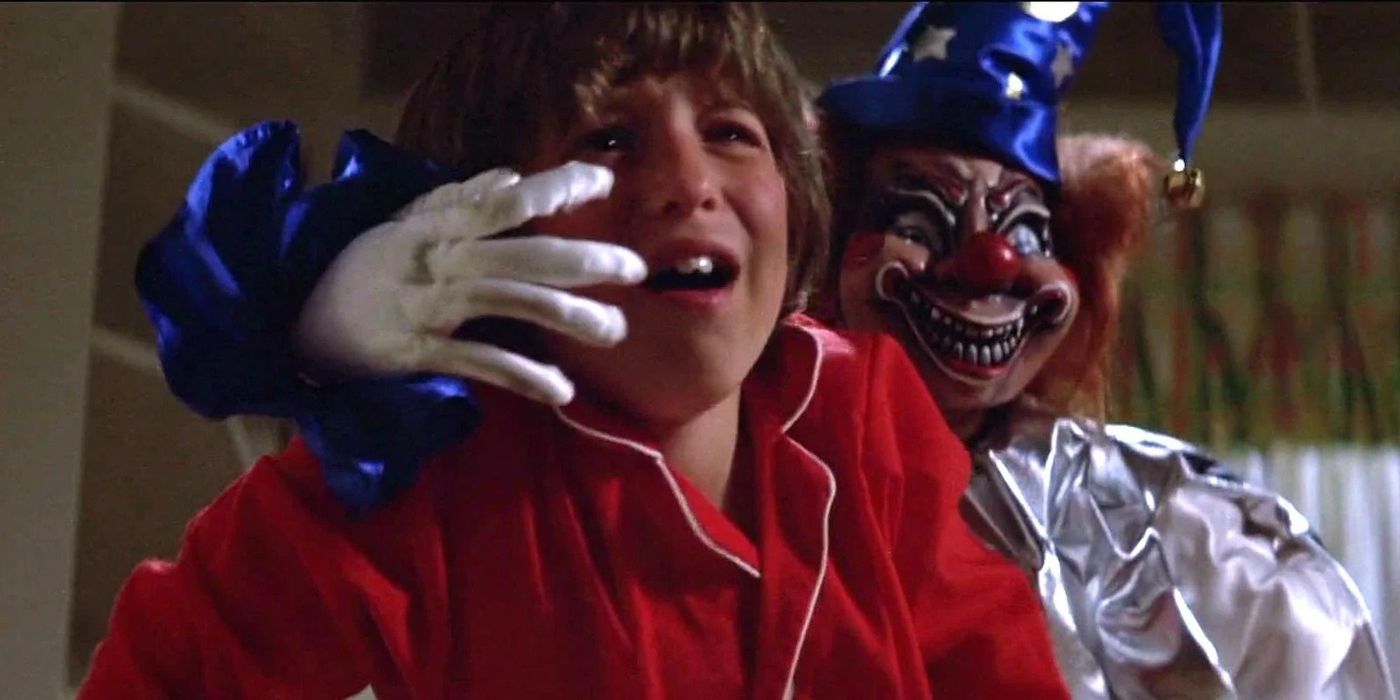The Big Picture
- Spielberg's abandoned project Night Skies was inspired by a real-life encounter with aliens in 1955, which turned into a media sensation.
- Spielberg initially wanted to make a sci-fi horror film, but later felt a desire to return to the "tranquility" and "spirituality" of Close Encounters of the Third Kind.
- Instead of Night Skies, Spielberg went on to create two iconic films: Poltergeist, which exorcised his own fears through a suburban horror story, and E.T., which manifested his childhood idea of a lonely boy befriending an alien.
In the late 1970s, Steven Spielberg was on top of the cinematic world. After back-to-back smash hits Jaws and Close Encounters of the Third Kind, moviegoers eagerly awaited what the wunderkind filmmaker from Arizona would do next. Though he'd ultimately stumble with critics and audiences in releasing the underappreciated manic comedy, 1941, the filmmaker had another ambitious project in the works.
Under the working title Night Skies, Spielberg began developing a science-fiction horror screenplay about a family's encounter with menacing aliens. Though he eventually abandoned plans for the film, remnants of it lived on in spirit just a few years later, when two high-profile films he was involved with hit theaters. Released in June 1982, Poltergeist and E.T. The Extra-Terrestrial, while representing starkly different sensibilities on the genre spectrum, each displayed narrative and tonal similarities that stemmed from the stalled script for Night Skies.
'Night Skies' Was Inspired by a Real-Life Incident
On the night of August 21, 1955, in the unincorporated community of Kelly, Kentucky, 11 members of the Sutton family claimed to have been terrorized by a horde of what they described as "little green men." The encounter began around 7 pm when a "real bright" object was spotted in the sky, and soon after, a small, strange-looking creature was spotted outside the farmhouse. According to the Suttons, terrified and arming themselves with rifles, the next several hours saw a tense standoff as the sinister creatures continuously appeared and disappeared. A family friend of the Suttons described the invaders as having an "oversized head...almost perfectly round, arms extended almost to the ground, its hands had talons...and its oversized eyes glowed with a yellowish light."
After firing rounds at the mysterious visitors, the shaken Suttons fled the scene around 11 pm, driving to the nearby police station in Hopkinsville. After dispatching authorities to the farmhouse, including state and military police, nothing but shell casings were found on the property. At around 2:30 the following morning, after authorities had left, the creatures allegedly returned and continued menacing the Suttons, who fled their home once again. Though an extensive investigation into the matter was launched, no evidence of the mysterious creatures was ever discovered. But despite the lack of evidence, the incident became an overnight media sensation, eventually taking on a mythical status among the documented history of UFO sightings.
Steven Spielberg Wanted to Make a Sci-Fi Horror Movie
Hot off the success of Close Encounters of the Third Kind, the filmmaker set his sights on another foray into science fiction, albeit this time with an element of horror. According to Slash Film, having learned of the Kelly-Hopkinsville incident from ufologist J. Allen Hynek, Spielberg hired writer John Sayles to write a script about a family's encounter with evil aliens. Sayles' script included four villainous lifeforms: Squirt, Skar, Klud, and Hoodoo. One of these particularly nefarious foes used its long finger, glowing with light, to kill livestock. Also present in the script was an alien named Budde, who befriends the victimized family's autistic son. After Sayles' contribution was complete, Spielberg circled Tobe Hooper, well-known for The Texas Chainsaw Massacre, to take Night Skies' directorial reins. He also enlisted the efforts of Rick Baker, at the time an emerging figure in makeup artistry, to oversee the project's alien effects.
As a tentative production neared closer, however, Spielberg began second-guessing just how interested he actually was in moving forward with a science-fiction horror film. According to the book The Films of Steven Spielberg, he came to a certain realization while shooting Raiders of the Lost Ark in North Africa. "I was in between killing Nazis and blowing up flying wings and having Harrison Ford in all this high serialized adventure. I was sitting there in the middle of Tunisia, scratching my head and saying, 'I've got to get back to the tranquility, or at least the spirituality, of Close Encounters." As fate would have it, a visitor to Raiders' set would help get the ball rolling in developing one of cinema's most beloved films.
Why Did 'Night Skies' Never Get Made?
While shooting Raiders, Spielberg had discussions with screenwriter Melissa Mathison (then married to Harrison Ford), who read the script for Night Skies and was particularly moved by the subplot involving the good-natured bond between Budde and the family's son. Based on that, she and Spielberg began concocting a story about a boy who befriends an alien stranded on Earth. Mathison remembers, "the idea of an alien creature who was benevolent, tender, emotional and sweet... and the idea of the creature's striking up a relationship with a child who came from a broken home was very affecting."
Suddenly pivoting away from Night Skies came with a set of challenges. Having already invested roughly $1 million into the project, Columbia Pictures had no interest in shifting to production on what was then dubbed E.T. and Me, which the company dismissed as "a wimpy Walt Disney movie." After a series of legal negotiations, Universal Pictures bought the rights to Spielberg's new project and reimbursed Columbia for its investment in Night Skies, also agreeing to give the latter company a generous 5% of E.T.'s profits. Considering the film's box office take would be massive, Columbia Pictures made out like a bandit.
'E.T.' and 'Poltergeist' Have Strong Similarities to 'Night Skies'
The summer of 1982 has been dubbed by some the "Spielberg Summer." Hitting theaters on June 4th and 11th, Poltergeist and E.T. The Extra-Terrestrial dominated the box office upon release. While Spielberg didn't direct Poltergeist, although speculation over whether he or Tobe Hooper called the shots has persisted for decades, he did co-write and produce the film, famously exerting a great deal of creative influence. An iconic horror film, Poltergeist's unleashing of malevolent forces on a family bears a strong resemblance to Spielberg's original premise for Night Skies. Shifting the horrific action to the suburbs, the film gave Spielberg an opportunity to exorcise his own fears, foisting them onto global audiences with a supernatural thrill ride. He's said of the film, "Poltergeist is the darker side of my nature — it's me when I was scaring my younger sisters half to death when they were growing up."
On the heels of Poltergeist came the highest-grossing film up to that point. One of Spielberg's most personal efforts, E.T. was the culmination of many thoughts, feelings, and creative ideas over the course of years. Though he's claimed that the notion of a lonely boy befriending an equally lonely alien initially came to him as a child, it didn't further materialize until he was on the set of Close Encounters of the Third Kind. In a 2009 career retrospective, Spielberg revealed, "I was haunted by this idea of an E.T. that gets trapped and doesn't go back into the mothership." Whether that haunting idea is what led to the inclusion of a benevolent alien befriending a young boy in John Sayles' script for Night Skies is unknown, but it's certainly a plausible assumption that tracks with the creative evolution of E.T.
Though it remains highly unlikely that Night Skies will be resurrected for the silver screen, its subtextual legacy lives on in two of the most iconic genre films from the 1980s. To this day, the juxtaposing sensibilities of Poltergeist and E.T. make for one hell of a double feature, and it's arguable that only a gifted visionary like Spielberg, no stranger to juggling vastly different projects simultaneously, could pull off such a feat. He couldn't have phrased it better when he said, "Poltergeist is what I fear and E.T. is what I love. One is about suburban evil, and the other is about suburban good."




.jpg)
-3.jpg)